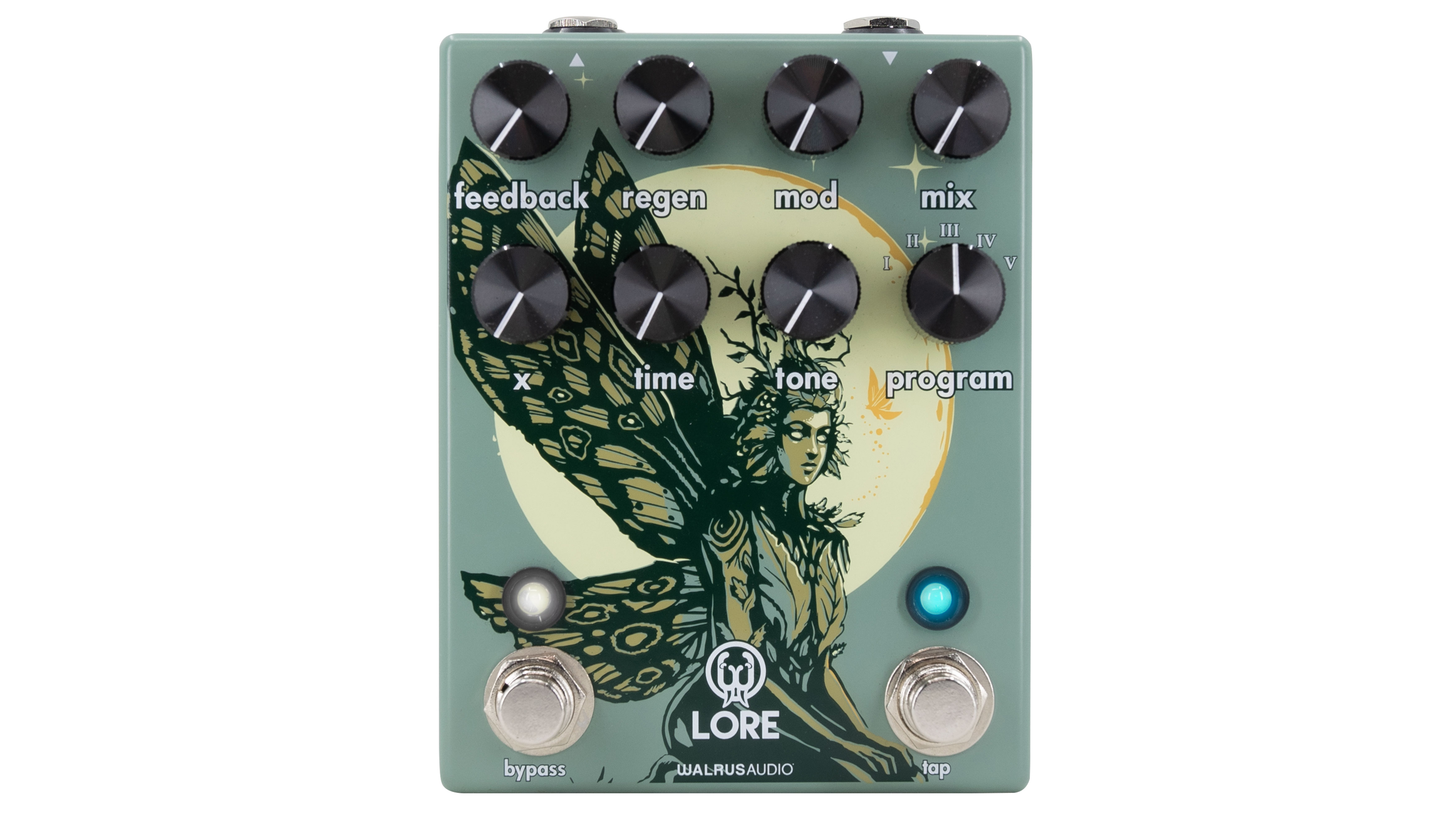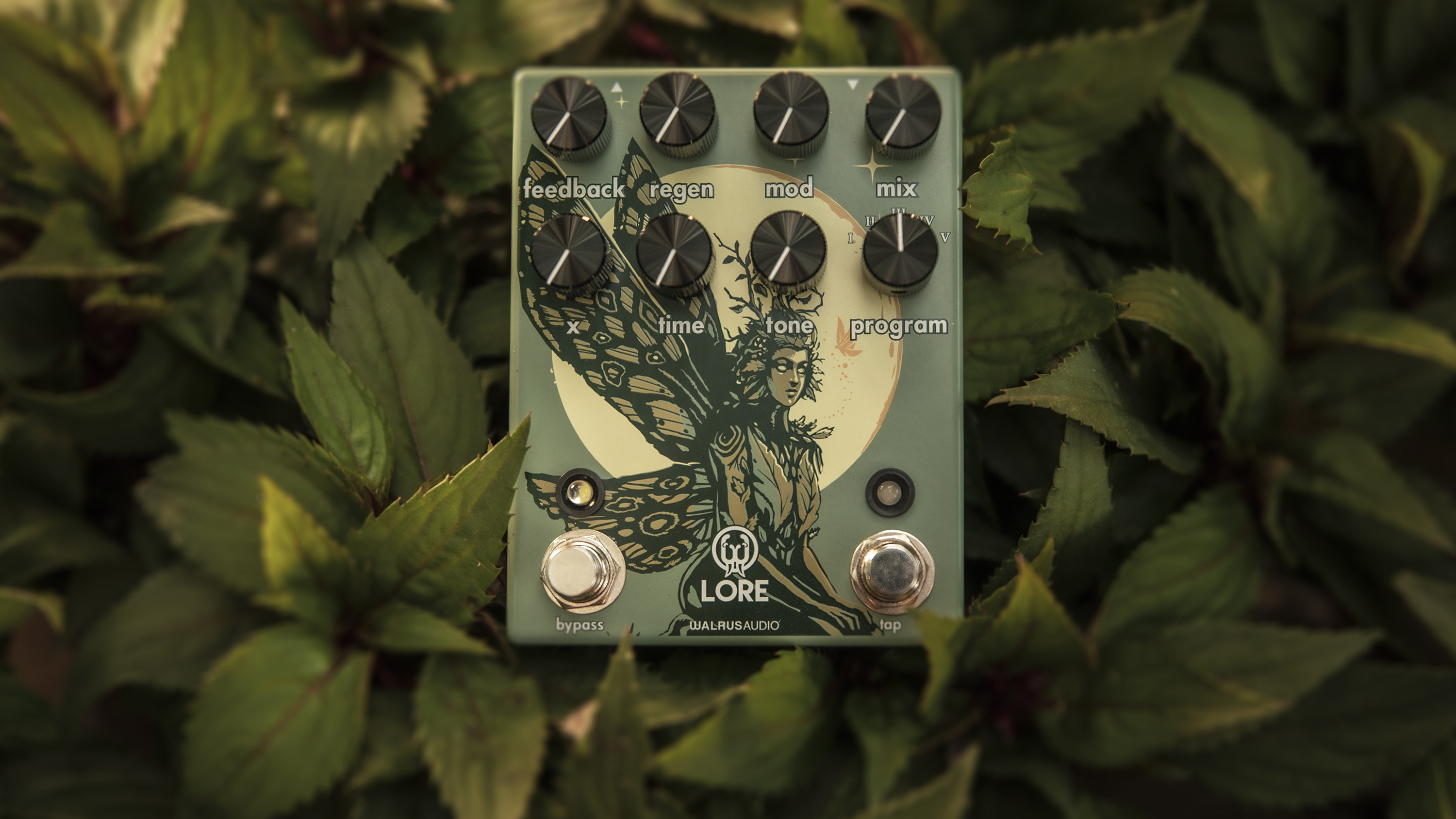GEAR EXPO SUMMER 2022: all the latest gear from NAMM and beyond
NAMM 2022: We're still finding plenty of inspiration from Walrus Audio's wonderful SLÖTVA but we may need to free up some space on our pedalboard of dreams again because its new LORE Reverse Soundscape Generator pedal sounds pretty spectacular to our ears.
Like the SLÖTVA, the LORE features multiple algorithms – five to be precise – and each uses combinations of delay and reverb that 'feed into each other for time-warping ambient creations'.
Here's how the five modes break down, with the onboard parameter control relationship with each, and we'll let Walrus's own descriptions of each do the talking…

• Program 1: Reverse Delay into Reverse Reverb
'Program 1 combines reverse delay with reverse reverb with a focus on organically interacting feedback paths. Space and ambiance build as the signal is reversed, re-reversed, reverberated, and reversed again within the feedback network.
'Experiment with the X knob to control how reversed your delay trails are with left being least reversed and right being fully reversed. Lots of fun with big, eerie minor chords!'
Want all the hottest music and gear news, reviews, deals, features and more, direct to your inbox? Sign up here.
• Program 2: Reverse Delay into Octave Up Reverb
'Program 2 is a light reverb that combines octave-up harmonic feedback with an expansive, airy reverb tank, to create a breathy, spacious ambiance. Use the Regen knob to introduce a playful shimmer into the reverb decay.
'Increase the X knob to control the decay of the reverb. Sounds especially great with delicate fingerpicking parts.'
• Program 3: Reverse Delay into Octave Down Reverb
'Program 3 is a dark reverb that combines octave down harmonic feedback with heavy filtering and harmonic distortion, to create a sound that is thick, rich, and murky.
'Use the Regen knob to bring in a lower octave in the reverb decay. Increase the X knob to control the decay of the reverb. Add in some high gain or fuzz to alter the time-space continuum.'
• Program 4: Reverse Reverb into Forward Reverb
'Program 4 is a dual reverb program, featuring reverse reverb into forward reverb, Dual harmonic feedback paths allow the user to dial in octave up and octave down, and time stretching allows for control of the size and character of the space. Perfect for instantly transforming guitar into rich ambient pads.
'Use the Feedback knob to add a lower octave to the reverse reverb. Conversely, use the Regen knob to add an octave up to the reverse reverb decay. Control the decay of the reverb with the X knob. To channel all things ambient, experiment with dynamic picking and strumming techniques with the mix fully wet for ethereal drones and pads.'
• Program 5: Pitch Delay into Pitch Delay
'Program 5 features two dueling pitch delays, which shift the input signal up and down in complementary or opposing directions, allowing the user to create intricate harmonic patterns in the feedback network. Behaves like a sequencer at higher delay times and like a harmonizer at lower delay times.
'Use Feedback and Regen knobs to control various amounts of pitched delay repeats. Use the X knob to change the order of the 4th, 5th, and octave intervals that the pitch delay steps through. Experiment with short staccato notes to create some very interesting rhythmic parts!'

Well that sounds like a lot of tones to us. And LORE features a pair of DSP chips running in series, each with their own analogue signal paths with individually adjustable gain, so players can manipulate how the delay and reverb interact. And there's tap tempo for both delay and reverb too, widening the scope. That same tap tempo switch can also be used to activate a momentary dive or rise effect on the sound.
In addition players can add modulation to any of the five modes and Walrus says the reverb trail will fade off naturally when the pedal is deactivated, so no abrupt transitions here!
We're interested to see both how subtle and crazy the sounds get; whether LORE might be able to replace an existing reverb pedal on some pedalboards. Because we've only got so much space! We can't wait to try LORE and it looks like you won't have to wait long - it's shipping at the end of June for £285 / €329.
More info at Walrus Audio.

Rob is the Reviews Editor for GuitarWorld.com and MusicRadar guitars, so spends most of his waking hours (and beyond) thinking about and trying the latest gear while making sure our reviews team is giving you thorough and honest tests of it. He's worked for guitar mags and sites as a writer and editor for nearly 20 years but still winces at the thought of restringing anything with a Floyd Rose.